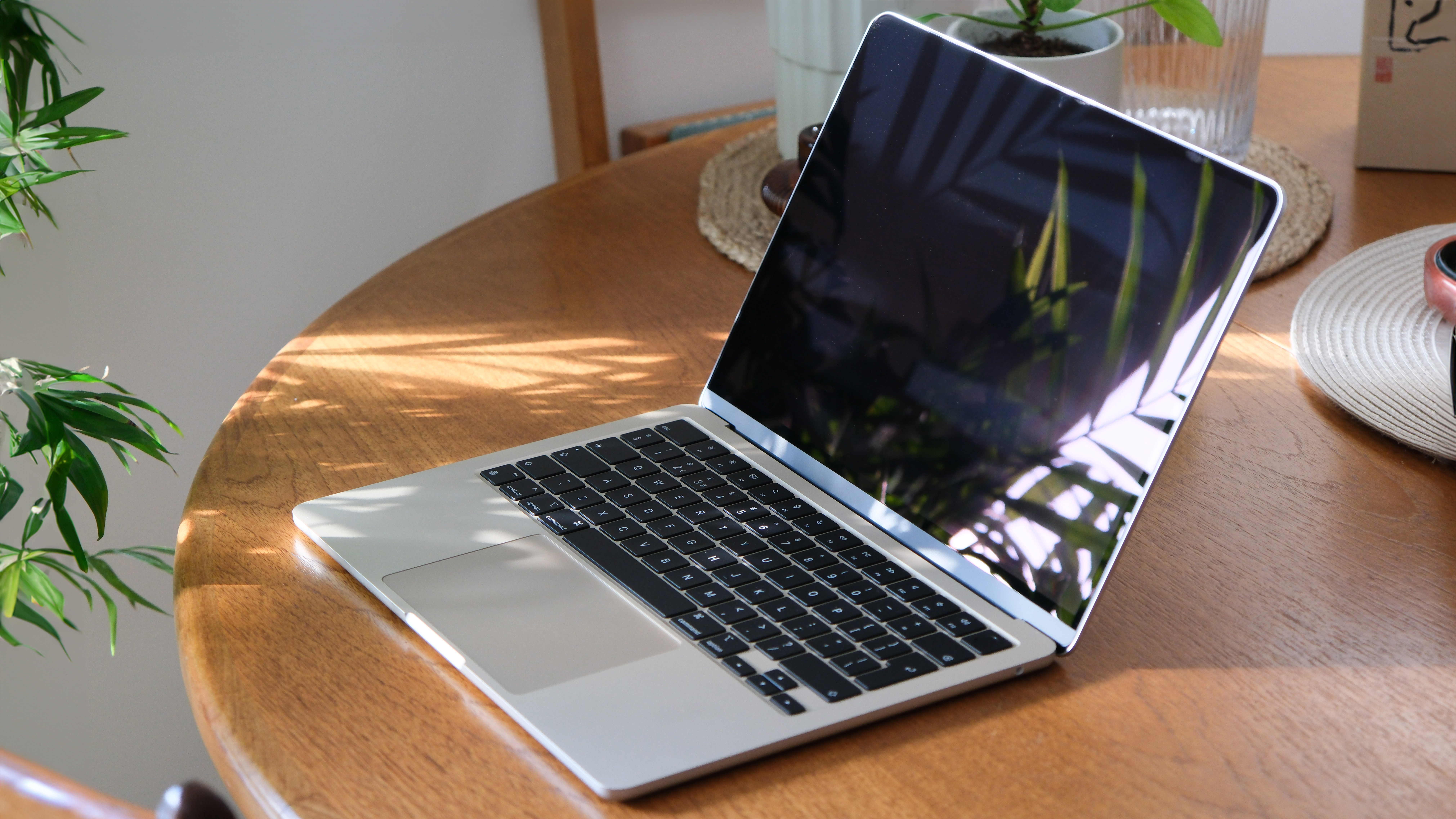
Another spring, another MacBook Air. Apple’s new laptops are now coming like clockwork to align with the Cupertino giant's development and rollout of its latest processors. Do we need a new MacBook Air every single year? I am not sure, but clearly enough people’s wallets are opening to make Apple say yes for now.
With the relatively small time frame since the last model, the latest MacBook Air doesn't have much to make a song and dance about outside of its processor moving from an Apple M2 to an Apple M3 chip, which should in theory offer some increased performance but also some increased endurance, with a more economic use of power. Otherwise, the new model is a clone of what came before, although that might not be an issue, as Apple’s M2 MacBook Air was a fantastic device, and Apple has claimed that the Air is now the “world’s most popular laptop”, so clearly the old ‘if it ain’t broke’ saying comes into play.
However, if all this chip talk is a bit nerdy for anyone who isn’t fascinated by core counts and nanometer manufacturing, the only question worth asking is – is a newly numbered processor actually faster and more efficient at running the creative tasks I need than previous models?
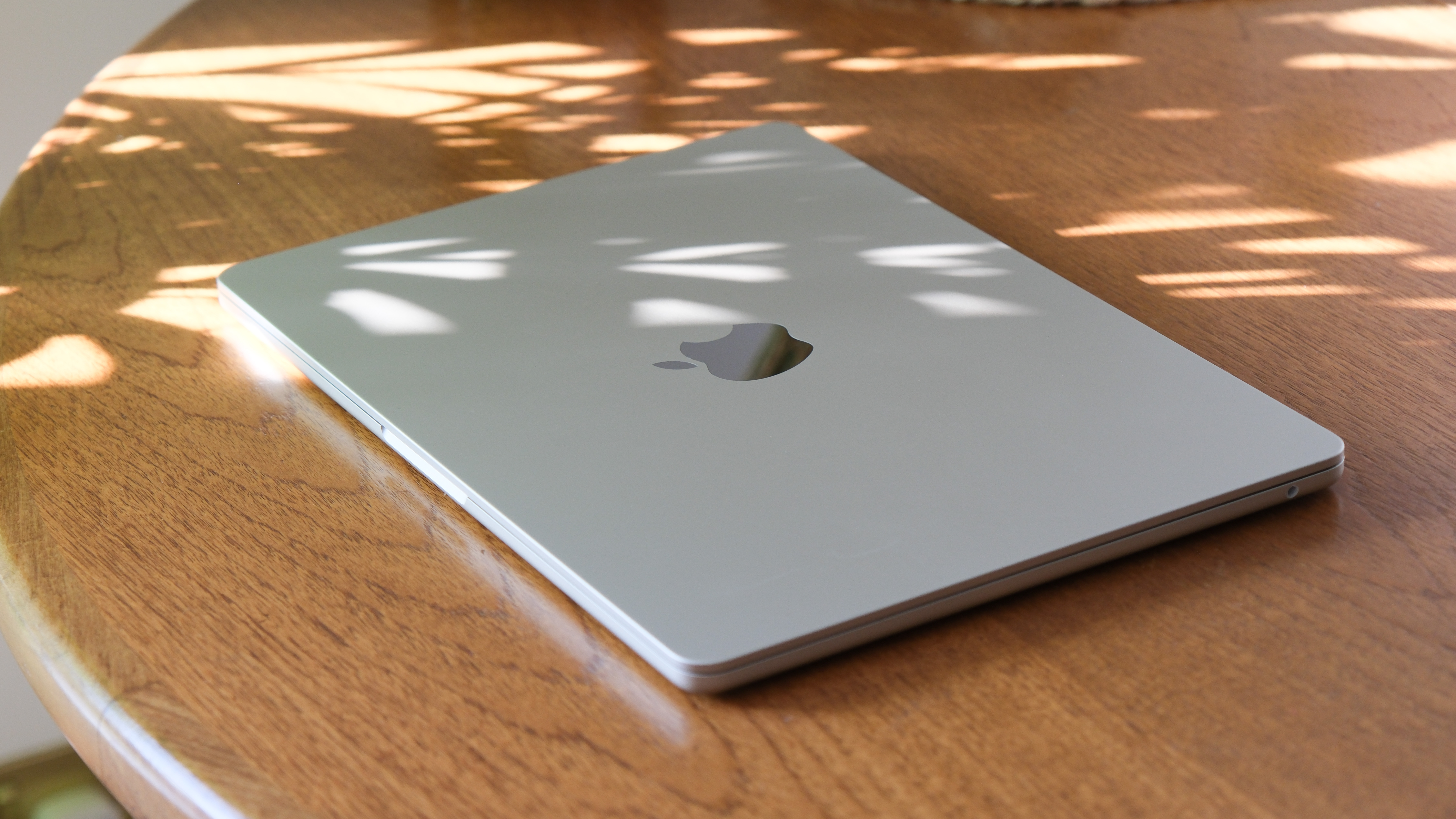
MacBook Air M3: Specifications
MacBook Air M3: Price
In Apple’s MacBook Air series, the M3 Air starts at only $100 / £100 over the M2 Air (which is staying in the lineup for now). However in the wider market, you can shop around and find regular deals on the M2 Air that bring the cost far below the newer model; and in my opinion, that is very much a deal you should take. The M3 Air does not make enough of a case for itself in terms of increased processing power over the prior model, and if the price is any sort of concern and you can find a deal, then you can absolutely buy the M2 Air instead without any major sacrifices.
MacBook Air M3: Design & Handling
The newer M3 MacBook Air doesn’t make any changes from the prior model in terms of design, sticking to the same chassis, ports, and screen. This isn’t necessarily a bad thing, as the MacBook Air is one of the most well-designed laptops around, but it does compound the idea that this new model doesn’t really have much to offer over the previous generation.
This is also the first time that the MacBook Air has been released at the same time in both 13in and 15in sizes. Apart from the increase in screen size, there isn’t much to separate these models however, the biggest differential is the larger laptop managing to squeeze in a slightly more impressive sounding speaker setup. Although the 13-inch model still manages to produce some decent sound for quietly listening to music or editing video.
But as I have already asserted, the MacBook Air is arguably one of the nicest designed laptops you can buy. The wedge shape that was the hallmark of the Air up until the M2 design is long in the rearview mirror, with the more rounded and smooth corners and edges of the M3 MacBook Air being much more pleasant to hold, and much less prone to damage other things in a tightly packed bag. The Air continues to live up to its name, being a very lightweight device, and thin enough to slip into tight gaps in a rucksack. The design is also fanless, which means that the Air is much more comfortable to use on a lap or in bed without superheating its base.
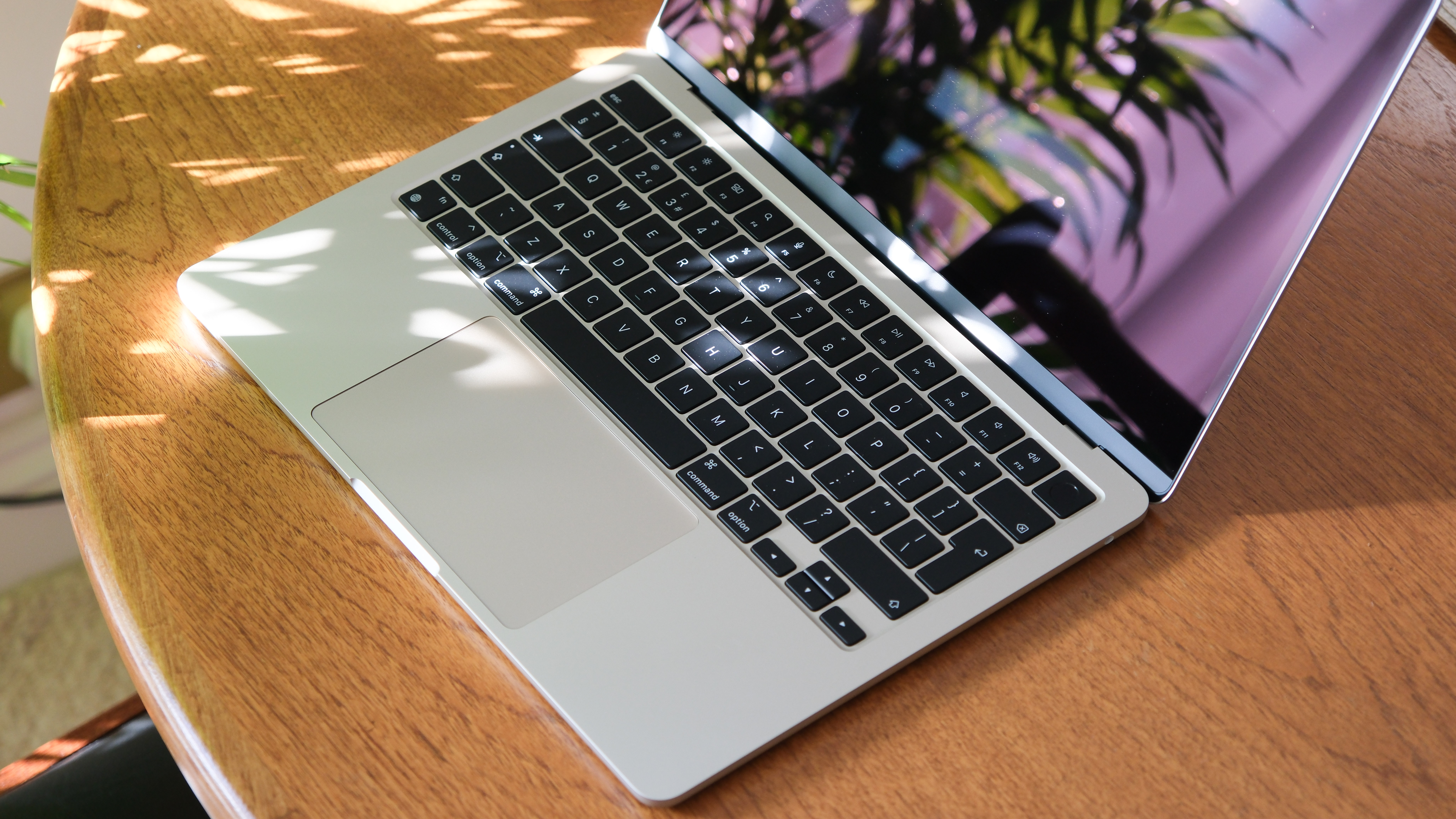
There are the same color options available as last year’s models, although the new Midnight colorway has a new anti-fingerprint coating. I have the Starlight version here, but I tested the Midnight version of the 15in Air last year, and fingerprints were a continual nightmare. However, the new Midnight version uses the same coating as the Black version of the MacBook Pro which I did manage to test a few months ago, and is really effective and keeps grubby marks off the chassis.
The scissor-switch keyboard is a delight to type on, and like the last generation of Air, there is no more Touch Bar. As someone who never used the Touch Bar on their MacBook Pro for anything other than brightness and volume, I am not sorry to see this go and be replaced by a more practical row of function keys. Especially as custom keys are quite practical in a lot of editing apps, getting these to work on the touch bar was always a bit of extra work.
In the top right of the keyboard, there is a very effective fingerprint reader, this is one of the best that I have used on any device, it’s very fast with few rejections, even when my fingers are wet or dirty.
The screen continues to be lovely, Apple laptops are renowned for their stunning displays and despite not much changing with this display it still looks wonderful, especially for photo and video editing, with smooth movement, balanced whites, and bright and accurate colors.
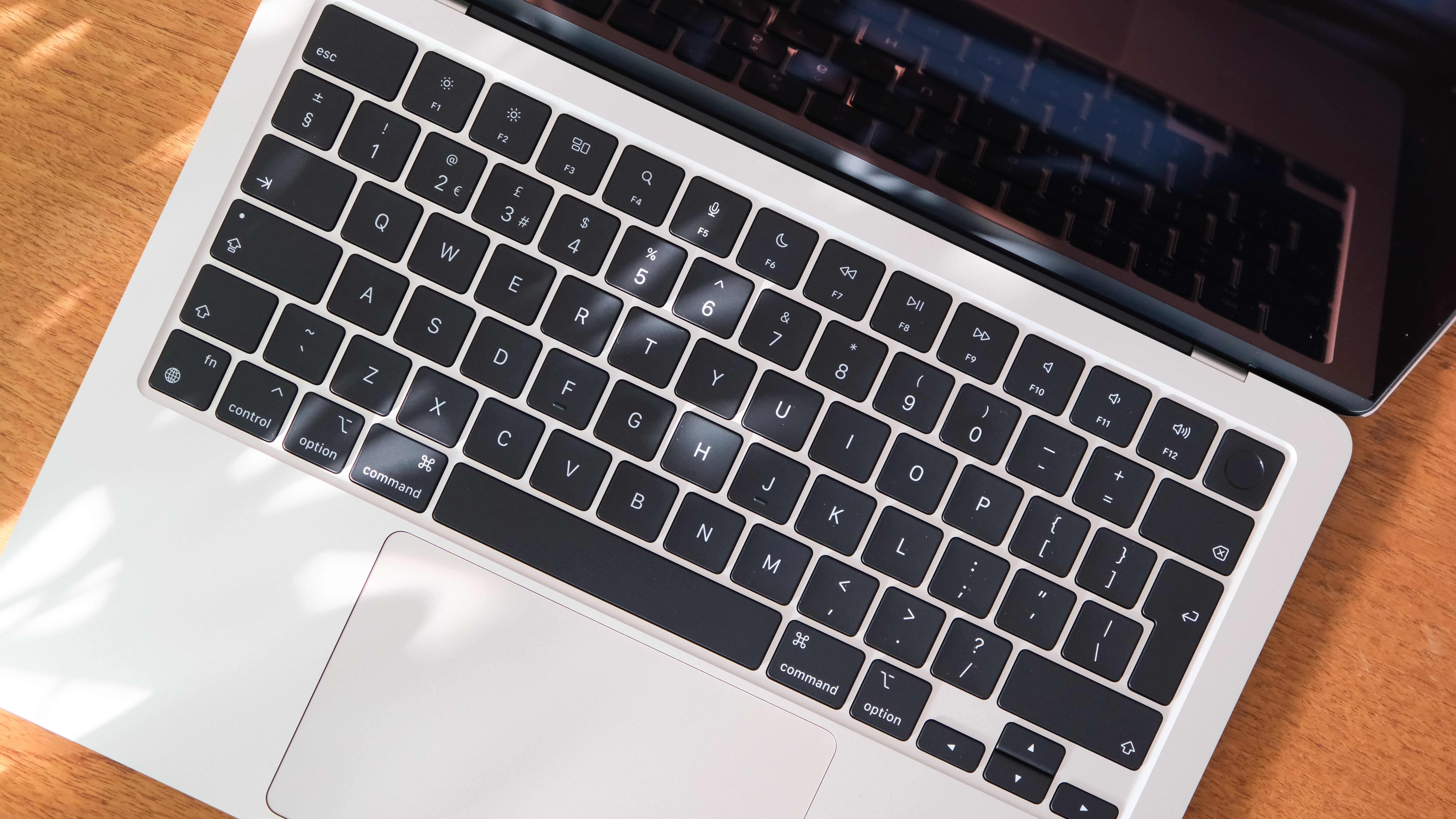
The only area that lets the MacBook Air down is in its port selection, which still has kept me trapped in a world of dongles and adapters. While the Air might be slightly too thin for an SD Card reader, it would be a very welcome addition for any creatives that want to use the Air as their primary device, but leaving it out of the Air feels like a cynical way to push users onto the MacBook Pro.
The Air also is limited to just two USB-C ports, which are also both irritatingly located on the same side. I regularly use my MacBook with an external monitor (via USB-C), and I almost permanently have an external SSD connected, which with these two ports in use, I have nowhere else to connect any other devices – like my external SD card reader.
I use a dock with multiple ports when I am at home, but the point of a laptop is I am not chained to my desk. Apple might be limited by the thin design here, but equally small Windows laptops manage to squeeze in many more ports. Again this feels like a way to sell me a MacBook Pro instead.
MacBook Air M3: Performance
As I have come to expect after testing the previous two generations of Apple’s in-house silicon – performance is a revelation compared to previous Intel MacBook models. Whilst it is very unfair to compare a new laptop to one designed around five or six years ago, in reality, there are a lot of people out there (I can count myself among them) who are still using Intel MacBooks.
I still use an Intel Mac day-to-day as my work laptop, and while it doesn’t feel slow in isolation, it is only when I compare the same tasks I do regularly on Intel to those same tasks on the Apple M3 Air that it really becomes apparent how much of a jump the M3 is. And in many tasks like photo and video editing, there is an overwhelming gulf in performance between the two.

In everyday use, the little things are just better, apps open faster and I can have more tabs open without my laptop grinding to a halt, but the real benefit of the M3 processor is when you actually push it.
Adobe Lightroom Classic is probably my most used piece of software on my Intel Mac (outside internet browsing of course), but it is also the software that frustrates me the most, as it is often so slow and jarring. In areas like these, the M3 chip in the MacBook Air is just a huge boon. I can import RAW images and make previews without my laptop going into meltdown or just freezing up, flicking through the film strip actually feels smooth. I can’t praise enough how much better life is on these newer MacBooks if you are coming from an old Intel model.
Nonetheless, my personal laptop is an M2-powered MacBook Air, so I am pretty familiar with what that laptop is capable of in real-world use, and I can't really notice any perceptible difference between the M2 Air and M3 Air in terms of performance. Even more intensive tasks, for example, a Lightroom export of 100 RAWs into JPEGs were neck and neck in the time it took to complete.
Below are some benchmarks comparing the latest M3 chip against the previous generations. Benchmarks certainly aren’t everything and they don’t necessarily reflect real-world use, but you can see here how big the difference is between Intel model benchmarks. There is progress here over the previous generation of M2 processors, but it isn't noticeably faster in use. For multi-core and graphics tasks, the standard M3 is behind the older M2 Pro on benchmarks.
The MacBook Air I have been provided has 16GB of RAM, the base Air has just 8GB. While a lot of reviewers (myself included) found this controversial in the most recent MacBook Pro – because that MacBook was for pros – I am not going to bemoan the Air starting on 8GB as that suits the target audience much better.
I will however still lodge a complaint here about Apple’s pricing for RAM and SSD upgrades over the actual value of these parts. Should 8GB of additional RAM cost $200 – I don't think so, and a similar upgrade on a Dell XPS is just $50. This can very quickly push the price of Apple’s “most affordable” laptop up until it makes spending just a little more on the MacBook Pro seem like a significantly better value option, funny that.
Battery life on the MacBook Air is outstanding. Just browsing the web, even using a lot of intensive traffic sites like Google Docs, Drive, Canva, and multiple tabs, I was getting a long day (and then some) easily out of the Air.
When using more high-power drain applications like Lightroom and Photoshop, the battery did drain faster, but I could comfortably do several hours of editing out and about. I am pretty confident I could just leave the house with this laptop without even taking the charger, meanwhile, my five-year-old Intel model barely makes it through streaming a movie.
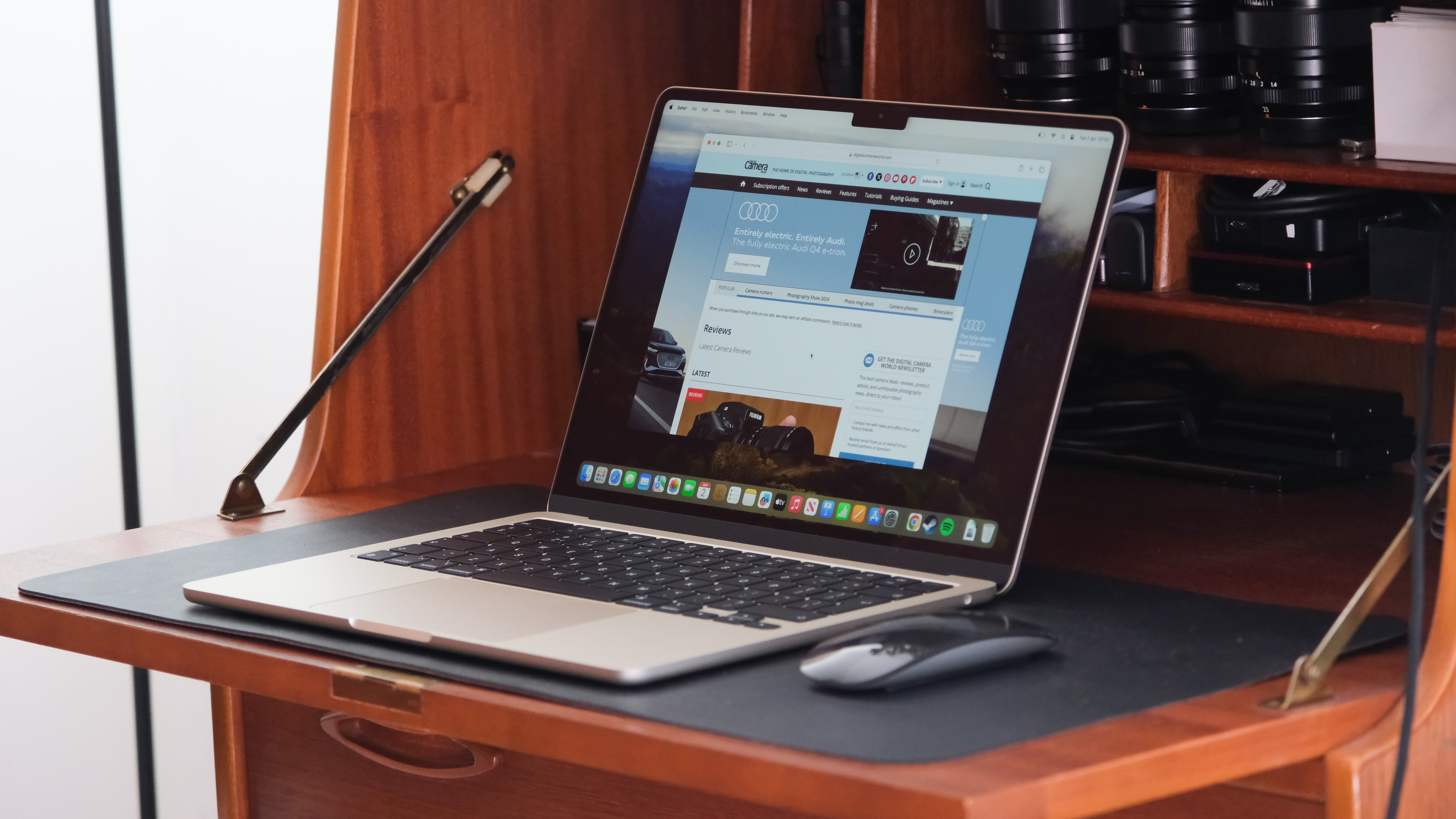
MacBook Air M3: Verdict
While the MacBook Air with M3 is the best MacBook Air yet, it is not by a significant enough margin from previous generations that anyone using an M1 or M2 MacBook should really sit up and take notice. However, if you are still using an Intel-powered MacBook then it gets a little more interesting, as the improvements over those now quite old models are significantly more dramatic, and when it comes to photo and video editing, you will really notice the increased speed.
The rest of the MacBook Air is a familiar affair, with the same screen, keyboard, and ports as the previous incarnation, although while this isn’t particularly exciting, all these parts were already fantastic and the reason why I would call the MacBook Air the best laptop for most people, although I will still bemoan the stingy amount of ports Apple puts on its Air models.
The final consideration for anyone is the price, with the MacBook Air M2 still being sold, and often found at a significant discount, the performance gains of the M3 chip aren’t really enough that I would consider spending more money on this model if I could get the same specced M2 model for much less.
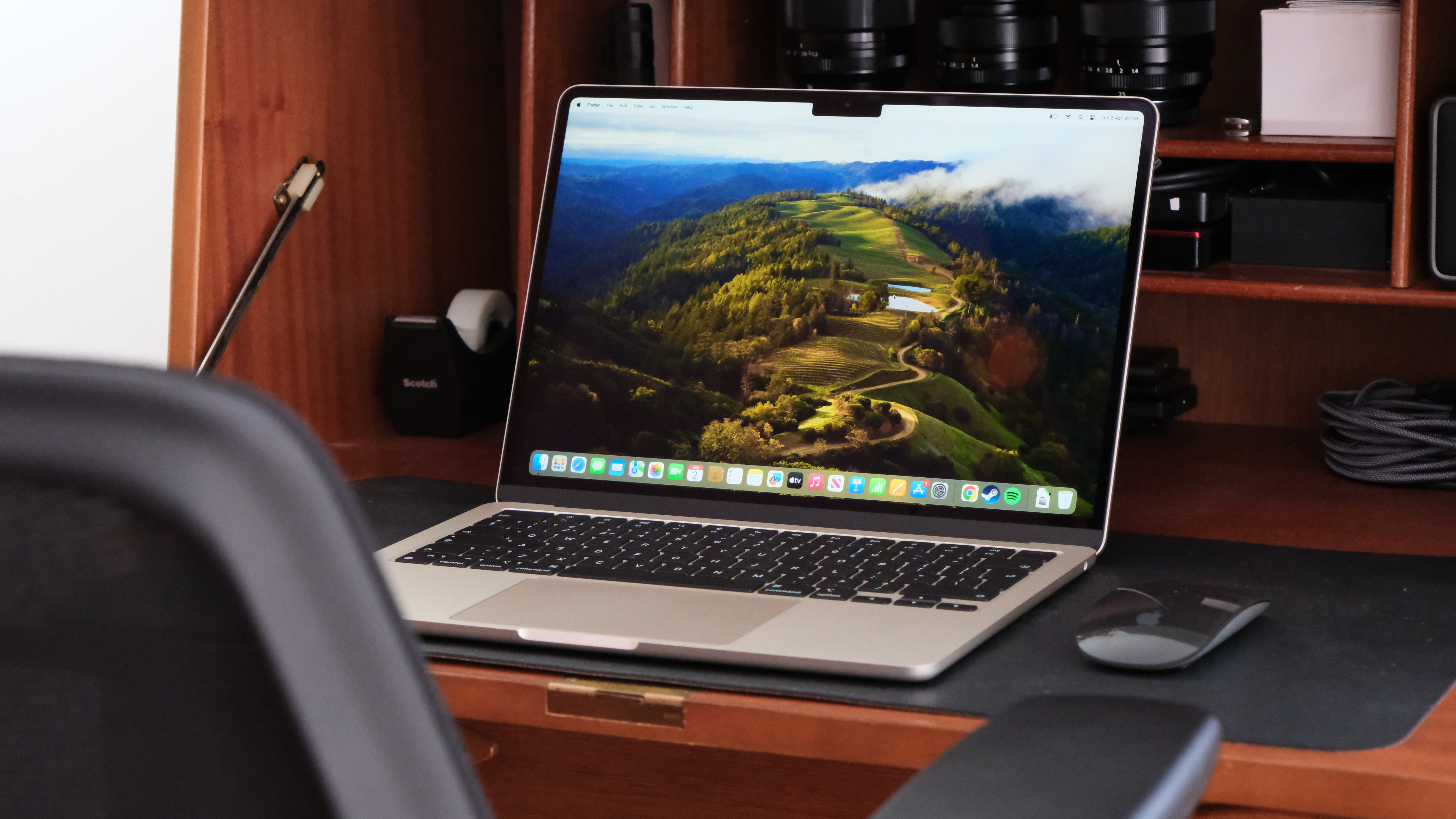
✅ Buy this if...
- If you want a thin and lightweight laptop for on the move, the MacBook air is incredibly svelte with a fanless design
- You want the very latest in processor technology, even if gains aren’t as significant as previous jumps
🚫 Don't buy this if...
- If you do a lot of intensive photo and video editing the MacBook Pro is a better option for getting through big jobs fast
- If money is a concern you can find the previous M2 model for less money without compromising much on performance







